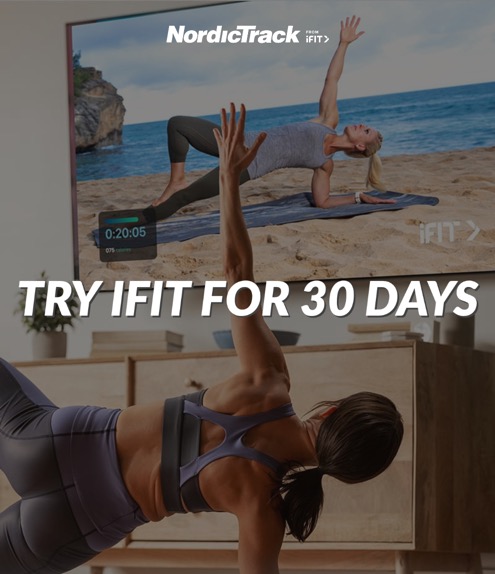Updated 08/29/2025

If you’re debating between ellipticals vs treadmills, you’re not alone. These two cardio machines are among the most popular in home gyms — and both offer unique benefits for weight loss, muscle toning, and endurance.
Maybe you’re wondering, “Is the elliptical better than a treadmill for weight loss?” Or “Which one burns more calories?” This guide breaks it all down.
We’ll compare the benefits, review scientific findings, and help you decide whether an elliptical or treadmill is the better fit for your goals — or whether alternating between both is your best path forward.
Comparing the Benefits of Ellipticals vs. Treadmills
Both ellipticals and treadmills are excellent cardio options, but they provide very different training experiences. Let’s break down what each machine does best.
The Benefits of Using an Elliptical
1. Low-Impact Cardio
Ellipticals are designed to be joint-friendly. Instead of pounding against a surface, your feet glide in a smooth circular motion. This reduces stress on knees, hips, and ankles — ideal for beginners, older adults, or anyone easing back into fitness.
2. Full-Body Engagement

Unlike treadmills, ellipticals actively work your upper and lower body. Pushing and pulling the handles recruits your arms, chest, shoulders, and core while your legs drive the stride. This creates a more efficient total-body workout.
3. Gentle Re-Entry After Injury
Because ellipticals reduce impact, they’re often recommended by trainers and physical therapists for those recovering from injuries or managing joint concerns1,2,3. They allow you to maintain cardio fitness without the wear and tear of higher-impact exercise.
4. Calorie Burn & Resistance Options
Don’t mistake “low impact” for “low intensity.” By adjusting resistance and incline, you can ramp up calorie burn, build strength, or even pedal in reverse to challenge different muscle groups.
Explore NordicTrack’s ellipticals to find models with adjustable incline, interactive resistance, and immersive iFIT training.
Benefits of Using a Treadmill
1. Specific Muscle Training
Treadmills — especially incline treadmills — target the glutes, hamstrings, quads, and calves. They closely mimic outdoor walking or running, making them a top choice for building lower-body strength.
2. Workout Variety
From steady-state walks to HIIT sprints and incline hiking sessions, treadmills offer nearly limitless training options. This variety keeps workouts fresh and helps you progress toward specific fitness goals.
3. Race Preparation

If you’re training for a 5K, half marathon, or full marathon, treadmills are unmatched for replicating outdoor running conditions indoors. Speed, incline, and pacing can all be fine-tuned to prepare you for race day.
4. Calorie Burn Potential
Adding incline and speed can dramatically increase energy expenditure. Popular workouts like the 12-3-30 treadmill workout show how incline training can accelerate fat burn and cardiovascular fitness.
See NordicTrack’s treadmill lineup for models that combine incline/decline training with advanced cushioning and immersive iFIT programs.
Ellipticals vs Treadmills: What the Research Says
Research comparing ellipticals vs treadmills has found:
- Ellipticals activate more upper-body and quadriceps muscles.
- Treadmills engage the glutes and calves more strongly7.
- Energy expenditure (calorie burn) and VO₂ max improvements are generally similar across both machines — meaning either can improve cardiovascular fitness when used consistently.
- Heart rate response is often slightly higher on ellipticals, showing a greater cardiovascular challenge at the same perceived effort.
In other words, both machines can deliver an effective workout. The “better” option depends on your body, goals, and preferences.
Is the Elliptical Better Than a Treadmill for Weight Loss?

Not necessarily. Calorie burn depends on intensity, duration, body weight, and effort.
- A 30-minute elliptical session can burn 270–378 calories4 depending on body weight.
- A 30-minute brisk treadmill walk burns fewer calories, but running or incline training can close — or even reverse — that gap.
Increasing the speed and incline on your treadmill can help you burn more calories. If you’re curious about the best incline levels to maximize weight loss, check out our guide on the best incline to walk on a treadmill for weight loss.
The takeaway: both machines can help with weight loss, especially when paired with balanced nutrition. The best choice is the one you’ll use consistently.
Ellipticals vs Treadmills: Which is Right for You?

Choose an elliptical if you:
- Want a low-impact, joint-friendly option.
- Prefer full-body workouts with upper-body engagement.
- Are returning to exercise after injury.
- Need a beginner-friendly machine that still burns calories.
Choose a treadmill if you:
- Want to train for races or outdoor running.
- Prefer workout variety (walking, jogging, sprints, incline training).
- Want targeted lower-body strengthening.
- Enjoy walking or running regularly.
The smartest option? Use both. Alternating elliptical and treadmill workouts prevents boredom, engages different muscles, and reduces the risk of overuse injuries.
Featured Models: Elliptical vs Treadmill
NordicTrack X16 Elliptical: Best for Low-Impact Full-Body Training
If you want joint-friendly workouts that still challenge your whole body, the X16 Elliptical is a strong pick. With a 32” auto-adjustable stride, incline/decline settings, and resistance levels that adapt through iFIT, it provides a smooth yet powerful way to train your legs, arms, and core. Perfect for anyone seeking low-impact conditioning with variety.

NordicTrack Commercial 2450 Treadmill: Best for Versatile Running & Incline Training
For runners or walkers looking for advanced performance, the Commercial 2450 delivers. With a -3% to 12% incline/decline range, a 24” HD touchscreen, and road-like cushioning, it’s built for both daily mileage and structured iFIT workouts. Whether you’re training for a race or tackling calorie-burning inclines, the 2450 adapts to your goals.

How to Get the Most Out of Your Treadmill or Elliptical
For ellipticals:
- Use both arms and legs evenly to maximize calorie burn.
- Mix in reverse strides to target hamstrings and glutes.
- Increase incline and resistance for progressive overload.
- Try guided iFIT workouts for variety and motivation.
Looking for more tips to help you get the most out of your elliptical workouts? Read this article.
For a great interval elliptical workout, check out iFIT’s Norwegian Ski Series.
For treadmills:
- Maintain good running form (upright posture, midfoot strike, relaxed arms).
- Add incline walking or jogging for muscle activation.
- Use HIIT intervals to boost calorie burn in less time
- Explore scenic iFIT global runs or trainer-led interval sessions for structure.
- Try the popular 12-3-30 treadmill workout to boost your calorie burn
Looking for a great treadmill workout? Check out iFIT’s Alaskan Trekking Series, which guides you through America’s final frontier and gives you an immersive experience with incredible views.
The Bottom Line
When it comes to ellipticals vs treadmills, there’s no single winner. Both are excellent tools for improving fitness, burning calories, and supporting long-term health.
The real decision comes down to your goals and preferences:
- Want low-impact, full-body training? Go elliptical.
- Want running-specific training and variety? Go treadmill.
Or better yet — alternate between the two for maximum benefits. With NordicTrack’s lineup of advanced ellipticals and treadmills, paired with iFIT’s immersive global workouts, you’ll never run out of ways to move, challenge yourself, and stay consistent.
Ready to compare? Explore NordicTrack’s ellipticals and treadmills today to find the machine that fits your lifestyle.
FAQs: Ellipticals vs Treadmills
Ellipticals are often better for beginners because they’re low-impact, easy to learn, and support a full-body workout without putting stress on the joints.
Both can burn significant calories. Ellipticals often show higher calorie burn for beginners, while treadmills can match or surpass that with running or incline walking.
Yes. Treadmills involve repeated foot strikes that create more impact on the knees and hips. Ellipticals reduce impact thanks to their smooth, gliding motion.
Yes. Ellipticals can be just as effective for weight loss as treadmills when resistance and incline are increased. Both machines work best when combined with good nutrition.
A treadmill is the better choice for race prep because it closely mimics outdoor running, allows pacing practice, and supports structured intervals.
Ellipticals recruit both upper and lower body muscles, engaging the arms, chest, and core as well as the legs. Treadmills primarily strengthen the lower body.
Yes. Alternating between the two keeps workouts varied, reduces overuse injuries, and challenges your body in new ways. Many NordicTrack users combine both for best results.
Interval training and incline walking are two of the most effective treadmill workouts for calorie burn. Learn more in our incline treadmill weight loss guide.
Resources
- Harvard Health. The best types of exercise when you have hip or knee pain. Read here
- WebMD. Rehab for Ligaments and Tendons. Read here
- Mayo Clinic. Exercising with osteoporosis: Stay active the safe way. Read here
- Harvard Health. Calories burned in 30 minutes for people of three different weights. Read here
- Mayo Clinic Health System. Interval training for heart health. Read here
- National Library of Medicine. Effects of Walking Speed on Total and Regional Body Fat in Healthy Postmenopausal Women. Read here
- ResearchGate. Comparison of muscle activation during elliptical trainer, treadmill and bike exercise. Read here
Disclaimer: The primary purpose of this blog post is to inform and entertain. Nothing on the post constitutes or is intended to be a substitute for professional medical advice, prevention, diagnosis, or treatment. Reliance on any information provided on the blog is solely at your own risk. Always seek the advice of your physician or other qualified health provider with any questions you may have regarding a medical condition, and please consult your doctor or other health care provider before making any changes to your diet, sleep methods, daily activity, or fitness routine. Do not disregard professional medical advice or delay seeking it because of information available on this blog. NordicTrack assumes no responsibility for any personal injury or damage sustained by any recommendations, opinions, or advice given in this article. Always follow the safety precautions included in the owner’s manual of your fitness equipment.


